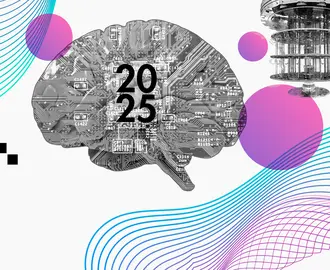Credit: iStock / Chan2545
Digital transformations are a daunting undertaking for any organization, but they’re especially challenging for companies that rely on legacy technology that’s been in place for generations.
It’s a high-tech process that’s made easier by some low-tech, time-tested business practices — communicating clearly, deputizing company influencers, and continuing to deliver quality products and superior customer service, according to executives from Salesforce, Blue Cross Blue Shield of Massachusetts, and other firms.
Speaking at the recent 2019 MIT Sloan CIO Symposium, the leaders agreed modernizing legacy technology is an ongoing journey that reaches every part of an organization.
It’s also the only path forward.
“Staying the same every day is more risky than changing,” said David Hoag, senior vice president and chief information officer at Options Clearing Corp., an equity derivatives clearinghouse that recently launched an initiative to replace its aging risk management, clearing, and data systems.
By embracing change, he said, “we’re going to drive greater resilience.”
“Strengthen the core and build for the future,” said Antonio Figueiredo, senior director, industry solutions at Salesforce. “That’s the key message, that organizations should start thinking going forward in these transformations.”
Here are four other points to remember:
Forgo “geek speak”
Upgrading enterprise technology requires good communication, according to the IT leaders. Instead of discussing the ins and outs of complicated technology, leaders should focus on business outcomes and why the new systems will benefit the company.
At Nypro, a global health care business that specializes in manufacturing products like plastic for inhalers, shop floors feature costly machines.
“You just don’t pick up million-dollar machines and tell the business, ‘We’ve got to change these.’ You just can’t do that, so we’ve got to think about it in different ways,” said Jean Kneisler, the company’s vice president and CIO.
The key to building the factory of the future is to “quit talking geek-speak” and use business terms with other executives, Kneisler said.
Instead of saying, “We need to be in the cloud,” or talking about shop floor automation, the “internet of things,” or big data, IT leaders can talk about meeting customer needs, increasing connectivity between other plants, and other concrete outcomes.
“It’s a matter of talking in business terms: What are the things we want to do? How do we take them along that digital journey, and what do we have to start thinking about?” she said.
Adopt a companywide renaissance mindset
Complicated transformations in how businesses operate require buy-in from all areas. A companywide approach is most likely to rally support behind the initiative, Hoag said.
Options Clearing Corp. launched an internal “Renaissance Initiative” earlier this year when changing its core technology to address tech and process debt.
Rather than focusing on technology alone, Hoag said, the renaissance initiative encompassed all areas of the company, from procurement processes to onboarding, hiring, retention, and incentives.
“If you think of it as a technology initiative, you’re missing half the boat,” Hoag said. “As much as the Renaissance [Initiative] is about the technology evolution, it is also about people and how they approach problems.”
Find the influencers
Successful change management requires employees who will champion initiatives.
Jonathan Lin, vice president of corporate development and strategy for Equinix, a data center and co-location provider, said organizations tend to underestimate the power of people.
“Find the influencers, and make sure that they’re engaged,” he said. “The technical challenge is really severe, but the people challenge, that’s number one, first and foremost … Getting the influencers on board, and making them your local champions, is always just such a key element.”
For global companies, that goes double. Kneisler said Nypro looks for change agents in different geographic areas.
“We know who the voices are and who the leaders are in those regions, and so we reach out to them and make sure they’re part of that upfront planning, strategy, buy-in, and then have them help drive the change,” she said. “Because you have to have change agents.”
Be brilliant at the basics
Communication, employee outreach, and renaissance mindsets are all vital to digital transformation, but businesses shouldn’t lose sight of the basics, like providing quality products and seamless service. Protecting data and assets remains a priority no matter where a company is in its digital transformation, as is keeping systems running and investing in employee training.
“Without the basics, you can’t have any conversation,” said Beth O’Rorke, senior vice president and CIO at Blue Cross Blue Shield of Massachusetts.
Core issues like production challenges should be addressed before anything else.
“We need to be able to flex and be nimble, and that’s the architecture we need to put in place, but we [also] need to enable the core business," O'Rorke said.
“Being brilliant at the basics is really key,” Kneisler agreed. “That allows us to sit at the table and have the conversations around where we’re going next.”



